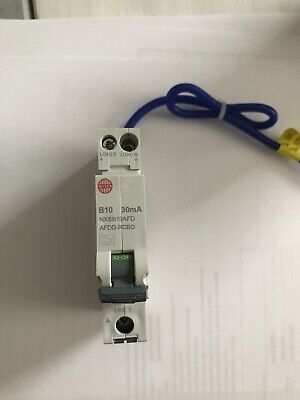Haven't been on here for a while, so sorry if this has been discussed before.
BS7671 2018 + A2 Regulation 421.1.7 recommends AFDDs for "single-phase AC circuits supplying socket outlets..." (requires in certain premises). My intention is that from September 27th I will recommend them to customers (in practice I already do in some situations) and require a signed waiver if they don't want the expense. At least I will do so for the actual Sockets Circuits - typically ring final, serving a number of sockets for general use and sometimes also fixed equipment via FCUs.
What I'm not sure about is circuits that serve just a single socket, such as a dedicated circuit for a fridge or an oven. In the case of a fridge, it will likely draw less than 2A, so an AFDD is unlikely to perform any useful function. In the case of an oven, one could justify cutting off the plug and connecting it via an FCU, in which case the circuit is no longer supplying a socket, yet with or without a socket it's still the same appliance and the same wiring. Yet in both cases if a socket is fitted an AFDD is recommended according to the regs.
BTW I understand a case could be made for AFDD protection for an oven and oven circuit. But for this question I'm just interested in the definition of 'circuits supplying socket outlets' for the purposes of this recommendation.
BS7671 2018 + A2 Regulation 421.1.7 recommends AFDDs for "single-phase AC circuits supplying socket outlets..." (requires in certain premises). My intention is that from September 27th I will recommend them to customers (in practice I already do in some situations) and require a signed waiver if they don't want the expense. At least I will do so for the actual Sockets Circuits - typically ring final, serving a number of sockets for general use and sometimes also fixed equipment via FCUs.
What I'm not sure about is circuits that serve just a single socket, such as a dedicated circuit for a fridge or an oven. In the case of a fridge, it will likely draw less than 2A, so an AFDD is unlikely to perform any useful function. In the case of an oven, one could justify cutting off the plug and connecting it via an FCU, in which case the circuit is no longer supplying a socket, yet with or without a socket it's still the same appliance and the same wiring. Yet in both cases if a socket is fitted an AFDD is recommended according to the regs.
BTW I understand a case could be made for AFDD protection for an oven and oven circuit. But for this question I'm just interested in the definition of 'circuits supplying socket outlets' for the purposes of this recommendation.
















